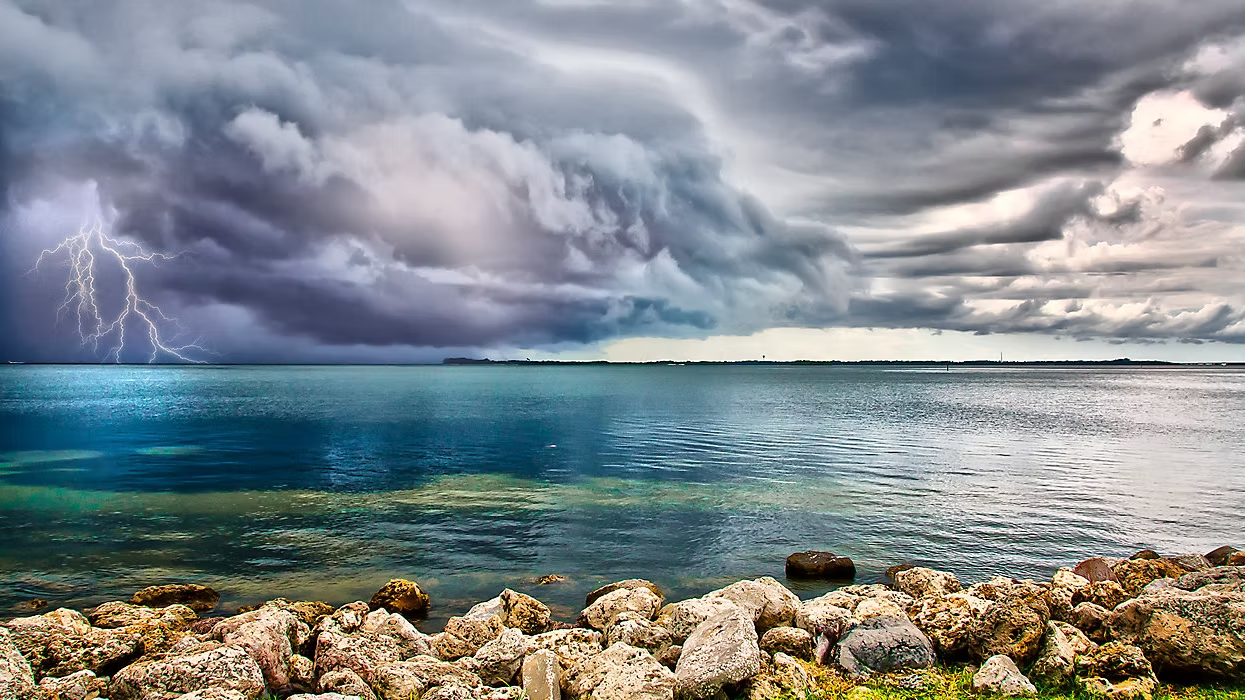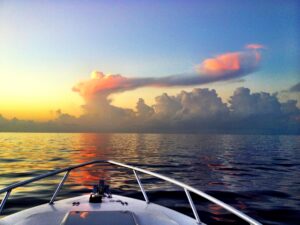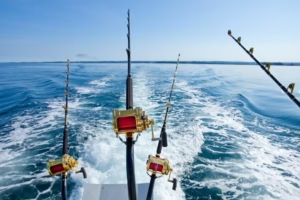If you’ve been boating in Florida, you probably already know a sunny morning doesn’t necessarily lead to a calm, sunny day. In fact, Florida sees upwards of 100 thunderstorm days each year! And while a brief storm on land isn’t a problem, it can quickly become a serious situation on the water. Staying safe during a storm or any other type of inclement weather is important. Make sure you’re prepared as summer storms can pop up out of nowhere in Florida.

Here are a few essential safety tips for boating in inclement weather.
Be Prepared Before You Venture
Obviously, the best way to deal with our stormy summer weather is to simply avoid it. Check weather reports in advance and postpone your boating plans if storms are likely. Even when the forecast looks fine, small localized storms can be less predictable. When you’re out on the water, keep eye on the sky and tune into NOAA Weather Radio (usually found on VHF channels 1 through 9), or download and set up one of many mobile apps that allow for special lightning and severe weather alerts.
#MemberTip If the weather forecast is particularly unfavorable, the GBC Member Services team will reach out to you about rescheduling your hours, with no 24-hour penalty fee.
Know What to Look For
Knowing about various Florida thunderstorms can help you differentiate between non-severe and severe thunderstorms and weather hazards. While Florida storms can vary in shape and size, they can be categorize into four types.
Single Cell Thunderstorms
Often called “popcorn” convection, single-cell thunderstorms are small, brief, weak storms that grow and die within an hour or so. They are typically driven by heating on a summer afternoon. Single-cell storms may produce brief heavy rain and lightning.
Multi-Cell Clusters
A multi-cell cluster consists of a group of cells moving as a single unit, with each cell in a different stage of the thunderstorm life cycle. As the multi-cell cluster evolves, individual cells take turns at being the most dominant.
Multi-Cell Lines
The third type of Florida storm is multi-cell lines. They are similar to multi-cell clusters, except that they develop in a line rather than a group. These lines are also squall lines and can stretch hundreds of miles. Moreover, the gust in these lines focuses mostly ahead of thunderstorms instead of dispersing out in all directions.
Supercells
On the thunderstorm spectrum, supercells are the least common type of thunderstorm, but they have a high propensity to produce severe weather, including damaging winds, very large hail, and sometimes weak to violent tornadoes. What makes a supercell unique from all other thunderstorm types is that it contains a deep and persistent rotating updraft called a mesocyclone. If the environment is favorable, supercell thunderstorms can last for several hours.
Be Aware of Life Jacket and Safety Equipment Locations
Having all the necessary equipment with you is the first step to safety when boating during a storm. Our GBC team will go over the location of all safety equipment aboard during your New Member Orientation. But if you ever need a refresher or further guidance about any equipment, don’t hesitate to ask!
Q: What kind of Safety Equipment is Onboard?
A: Every boat has adult-size life jackets to match the boat’s maximum capacity, throwable flotation square, flares, fire extinguisher, first aid kit, dock lines, and some boats come with fenders. We have youth and child-size life jackets available—please tell our staff how many you need when you make your reservation or arrive at the dock.
What to Do if You Are Caught in a Storm
- If a storm is approaching and there is thunder and lightning in the distance, the best course of action is to get off the water.
- If not possible, find a protected area out of the wind and drop anchor.
- Remaining as low as possible in the center of the boat is advisable.
- Have everyone on the boat put on life jackets.
- Stay away from any metal, including fishing rods, which should be stowed away along with anything else that could act as an attractive conductor.
- Lower antennas and turn off electronics.
- Under no circumstances should the VHF radio be used during an electrical storm unless it’s an emergency (handhelds are OK)
Stay Summer Storm Savvy
A strategy of boating only on sunny, cloudless days may work well in places like Idaho and California, but we all know rain is likely in the forecast any day of the week in Florida. The most important thing to know about summer storms is to stay aware, and have a plan. If all goes well, the storm will blow past or rain itself out in 20 to 30 minutes. It’s best to wait at least 30 minutes until after the last clap of thunder to resume activities.


